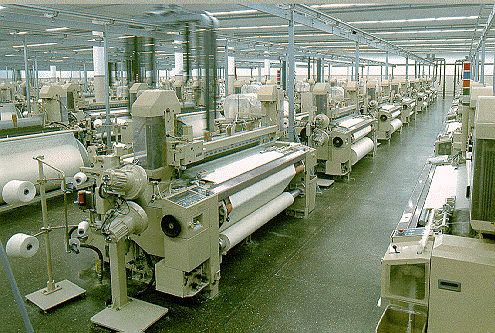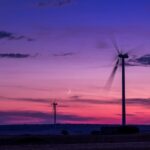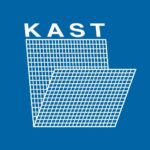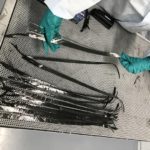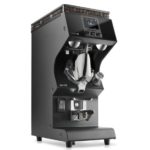Sostenibilitá e impatto ambientale
Reducing environmental impact of air jet weaving by exploiting a novel method based on energy efficiency as a central property in the design phase of production processes of composite materials
Introduction
Air jet weaving is the most productive but also the most energy consuming method in order to produce composite materials. Increasing energy costs and environmental impact are a challenge for the manufacturers of machines aimed to produce composite materials. Technological developments are always concerned about low energy costs, low environmental impact, high productivity and constant product quality. The high degree of energy consumption of the method can be ascribed to the high need of compressed air.
Discussion
This abstract deals with the use of a novel method which suggests energy savings potentials throughout the lifetime of production processes of composite materials within the field of machine manufacturing industry by starting directly from the design phase. Energy efficiency is taken as central property in the design process and it represents a new requirement/property to be defined in the phase of design problem/task definition. In contradiction with established methodologies, the approach includes an initial analysis of existing technical systems and the individuation and classification of their prior and relevant energy consumers (sub-systems and processes). The identified major consumers are afterwards systematically addressed to reduce their energy consumption: several options and solutions – the system characteristics – are determined and considered, starting with the complete elimination of the energy usage and ending with the option of recovering energy. A following step of analysis consists of the verification of the system design, predicting and evaluating the system behavior using several tools such as FEM analysis, CFD simulation models and experimental analyses. The design process provides one or more solutions if the accounted properties are met by the defined characteristics. A systematic approach for the development of energy efficiency machine tools, proposed by Neugebauer (Ref. 1), provides general concepts that can be applied to other type of industrial machinery and could be taken as reference in the possible definition of methodologies for the energy efficiency design of specific machines. This approach is based on the property-driven design methodology by Weber (Ref. 2), that defines the design process as a process which has to reach given properties (i.e. requirements) by defining characteristics to ensure this properties (e.g. geometries or materials). Since nowadays products become more and more multi-disciplinary by the constantly increasing integration of added functionality and product intelligence and since energy is a global design attribute which is influenced by all disciplines, the development of energy analysis methodologies, both numerical and experimental, requires an integrated research strategy. In the effort of reducing the ecological footprint of air jet weaving production process, effective and efficient analysis techniques and adequate measurement technologies are required to produce world leading products with a high energy-efficiency, without compromising functionality, safety and performance. This demand is not only driven by social awareness, but also by economic reasons, such as rising energy price. Combined with the increasing trend towards virtual design and prototyping, to reduce total cost of ownership and development times, the prerequisite for designing ‘green’ products creates an urgent industrial need for robust and volatile simulation and experimental validation methodologies in the analysis of the weft insertion process of air jet weaving technology. Therefore, differently from conventional approaches unable to identify energy potentials at early stage, this novel method combines energy efficiency, considered as a central requirement already in the design phase, with the state of the art finite element analysis and computational fluid dynamic techniques and CAE modeling which in the end led to a remarkable improvement of the environmental and holistic performance of machine itself. While designing their products, manufacturers will have to respect predefined measures, which aim to reduce the environmental impact of products throughout the whole product lifecycle (such as production, use and disposal). It must be noted that in general, energetic efficiency depends on how a machine is made (“design”) and how it is used (“management”). These two aspects cannot be fully separated and a designer must take into account how the machine will be used and what will be the associated total cost of ownership and environmental impact. Therefore in next air jet weaving machine generations, by means of applying this energy efficiency approach already during the design phase, the ecological footprint is reduced without losing performance. This means that manufacturers will have to start taking energy efficiency features into account during the design cycle. In other words, the design process should move from a purely performance and capacity driven approach to an approach that includes energy efficiency as a key parameter. By combining the approach focused on energy efficiency with next-generation of FEM, CFD, CAE tools, the solution of the majority of problems will be shifted from the production and pre-production phases to the detailed design phase at the very least, representing a strong impact up for economic issues and entrepreneurial decisions. Such a new design paradigm is expected to lead to substantial energy savings during the products’ lifecycles and to reduce total costs of ownership of the air jet weaving machines.
Results and Outlook
In air-jet weaving, the largest share of energy consumption can be allocated to the pneumatic components. The relay nozzles as well as their valves cause the major share of energetic inefficiencies within the pneumatic system. In this context, a novel relay nozzle concept is the most promising measure to significantly improve energy efficiency of air-jet weaving. A novel nozzle concept has been introduced which provides similar driving force on the yarn at a reduced level of pressure. Different nozzle prototypes have been characterised on a weaving machine. Moreover, the interaction of the flow field across the shed and the profiled reed is investigated. New geometries of profiled reed which enable a minor waste of compressed air between the reed dents are proposed. The three dimensional CFD analysis of the flow behaviour in the reed channel is fundamental to investigate and to achieve a more accurate and energy efficient weft insertion process. The combination of the preferred relay nozzle type and profiled reed is leading to an energy saving of 45% in comparison with current industry configurations.
Abstract authors and speakers at “4° Convegno Nazionale Assocompositi”:
Grassi Corrado, 3T GmbH, Aachen, corrado.grassi@3t-gmbh.de
Schröter Achim, Institut für Textiltechnik, RWTH Aachen, achim.schroeter@ita.rwth-aachen.de
Dr.-Ing. Yves-Simon Gloy, Institut für Textiltechnik, RWTH Aachen, yves.gloy@ita.rwth-aachen.de
Univ.-Prof. Thomas Gries, Institut für Textiltechnik, RWTH Aachen, thomas.gries@ita.rwth-aachen.de


